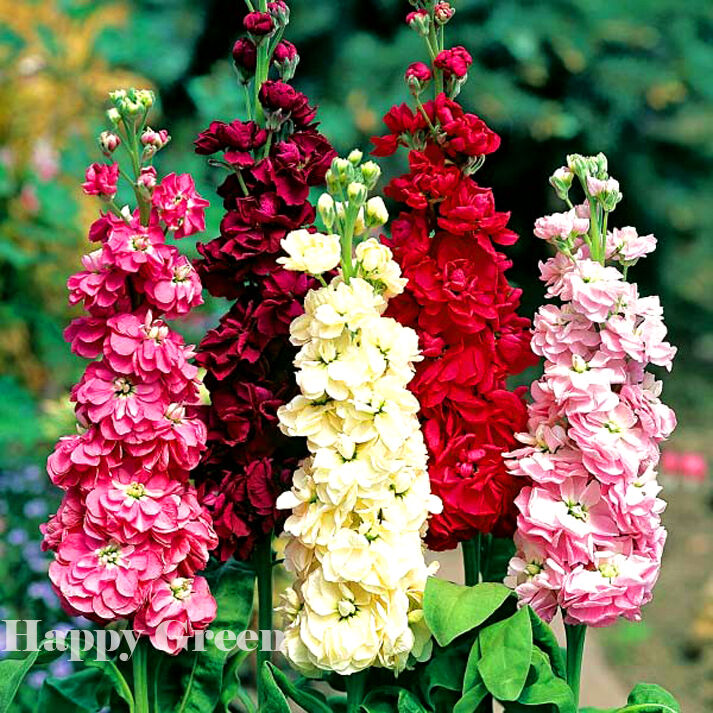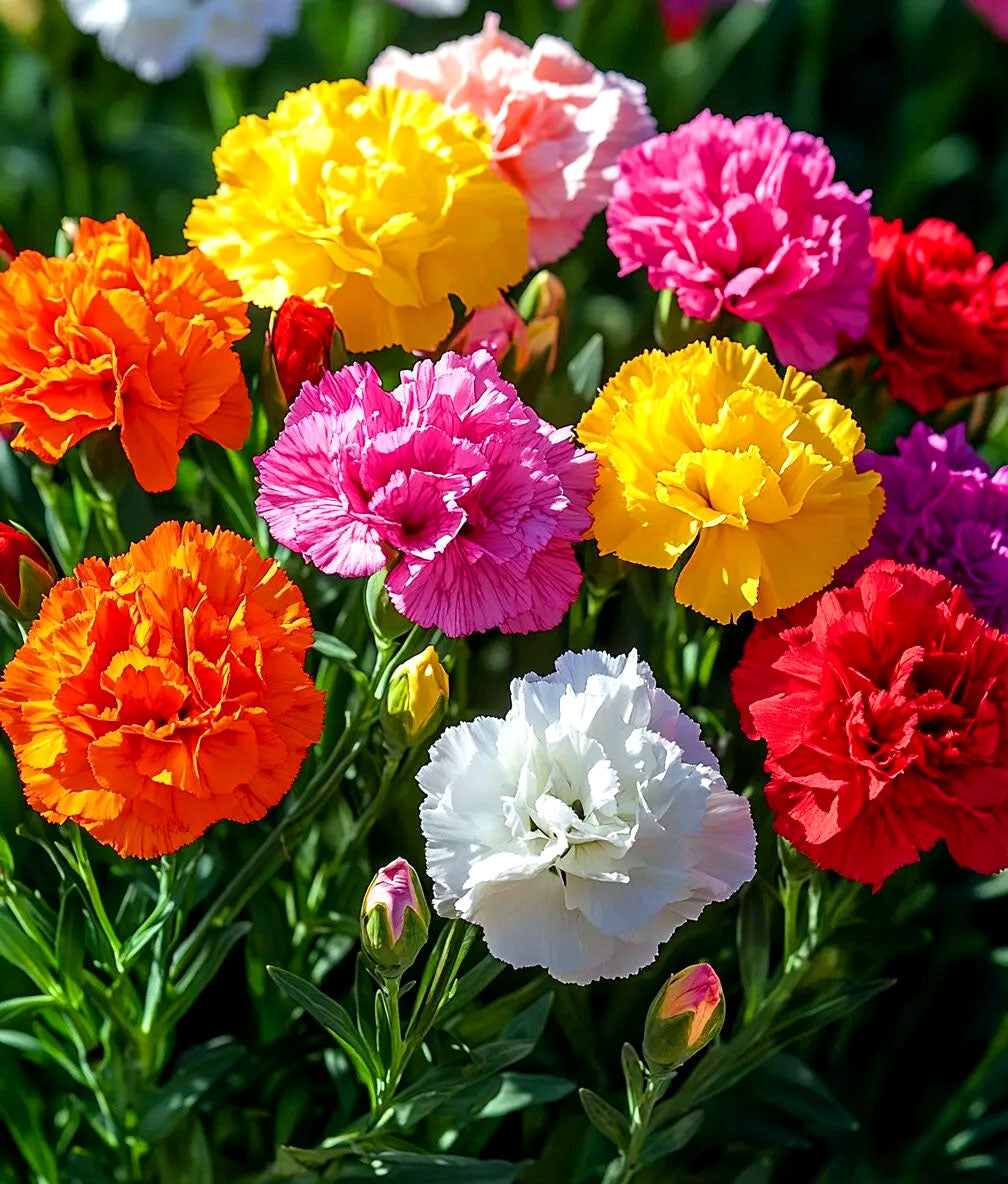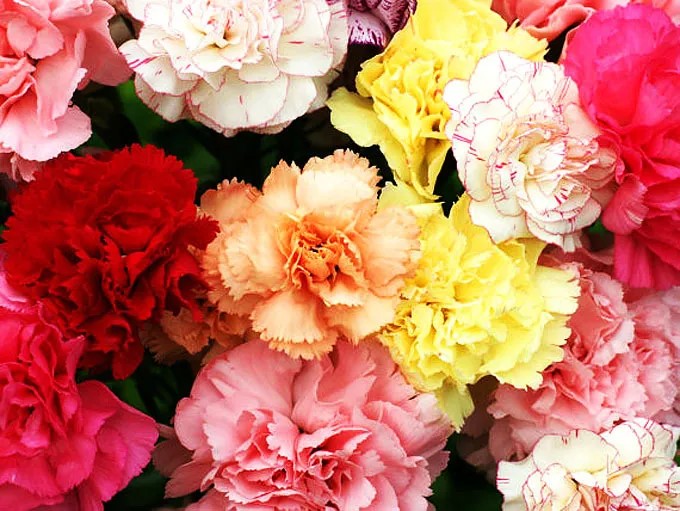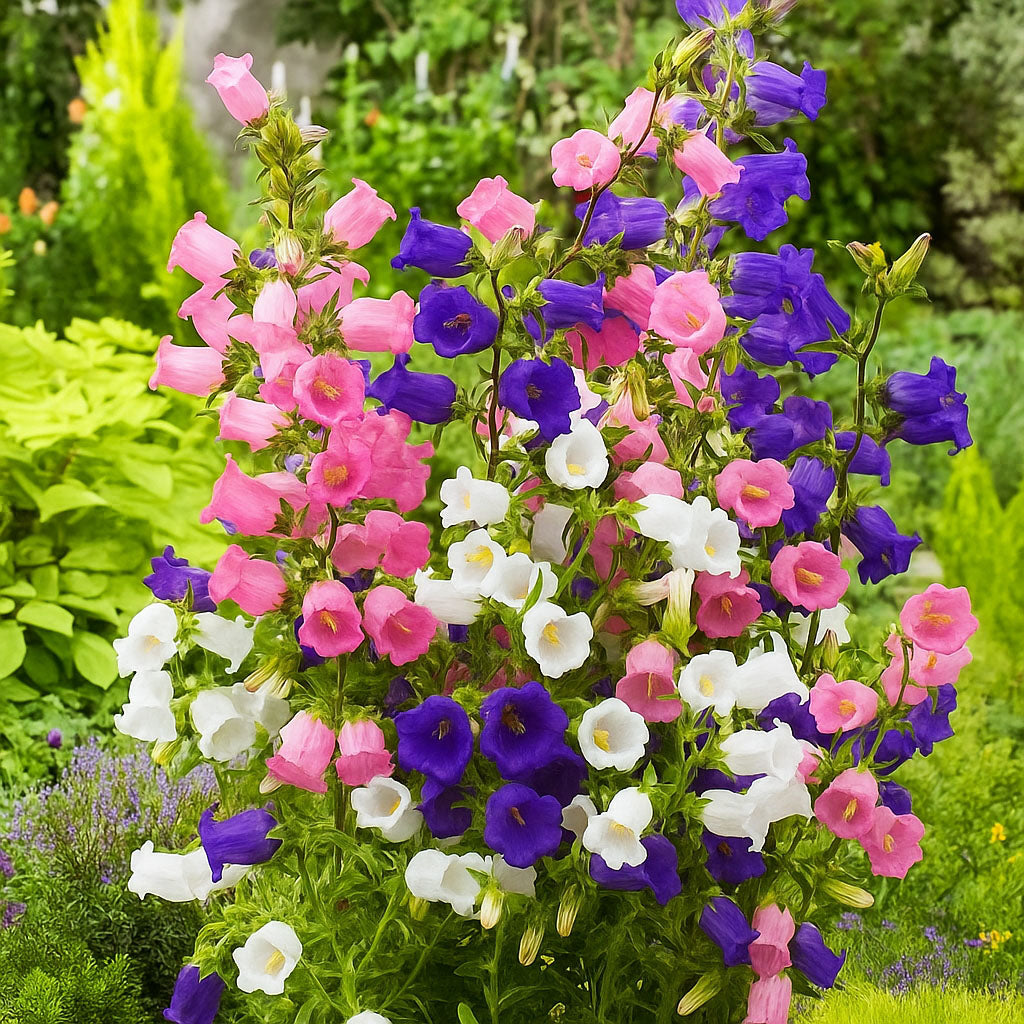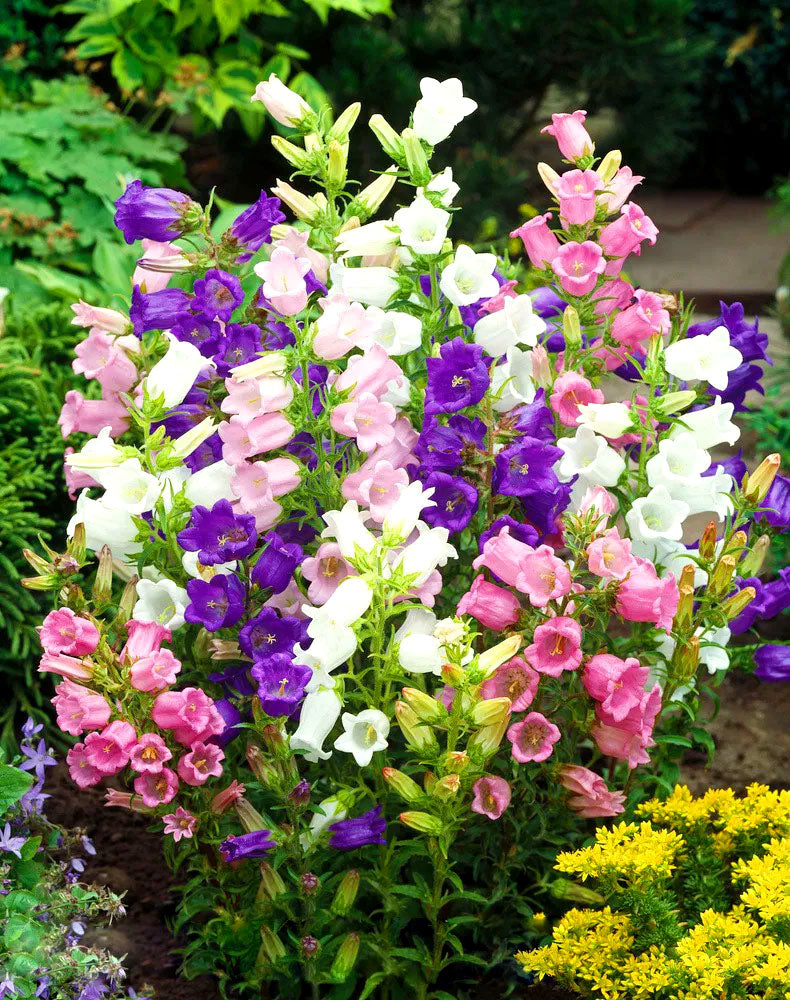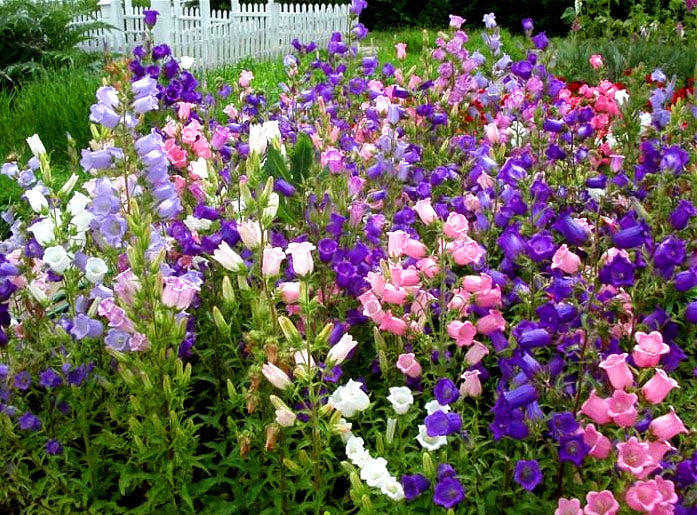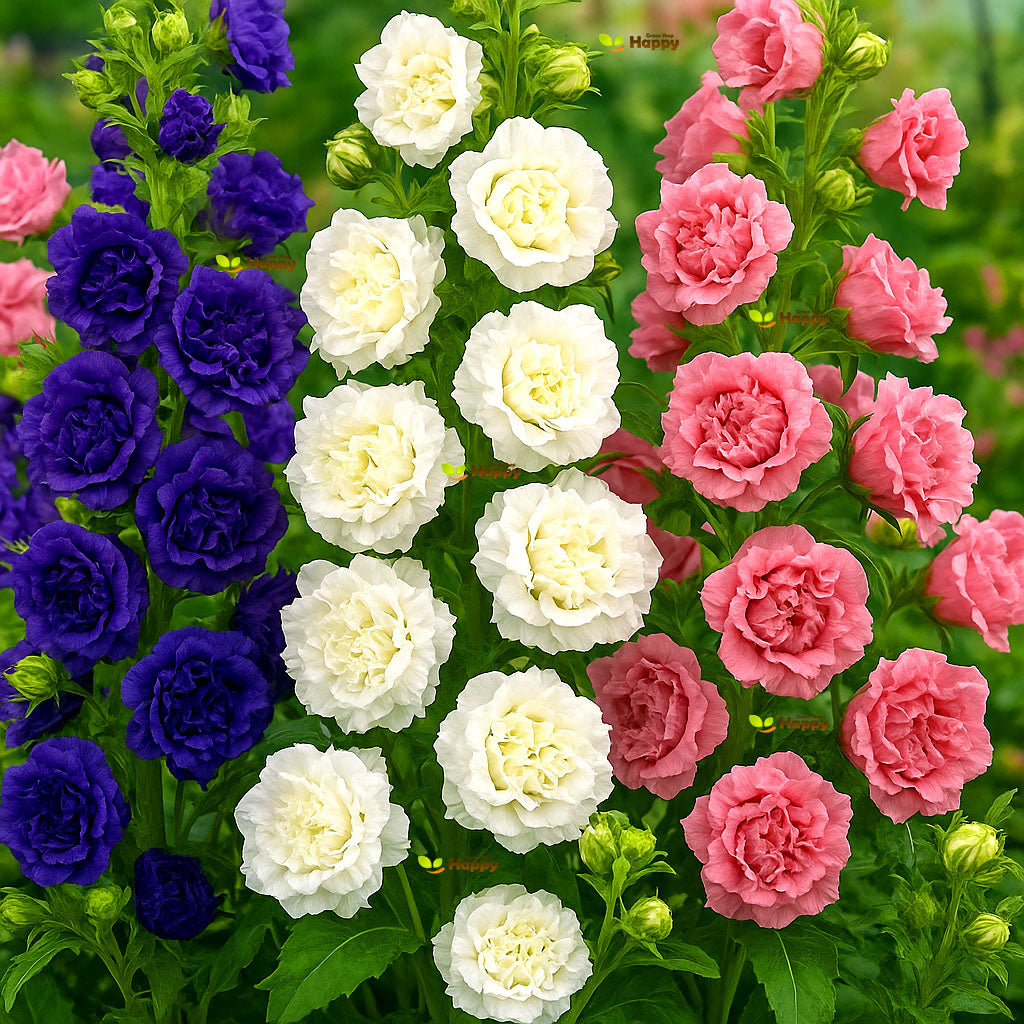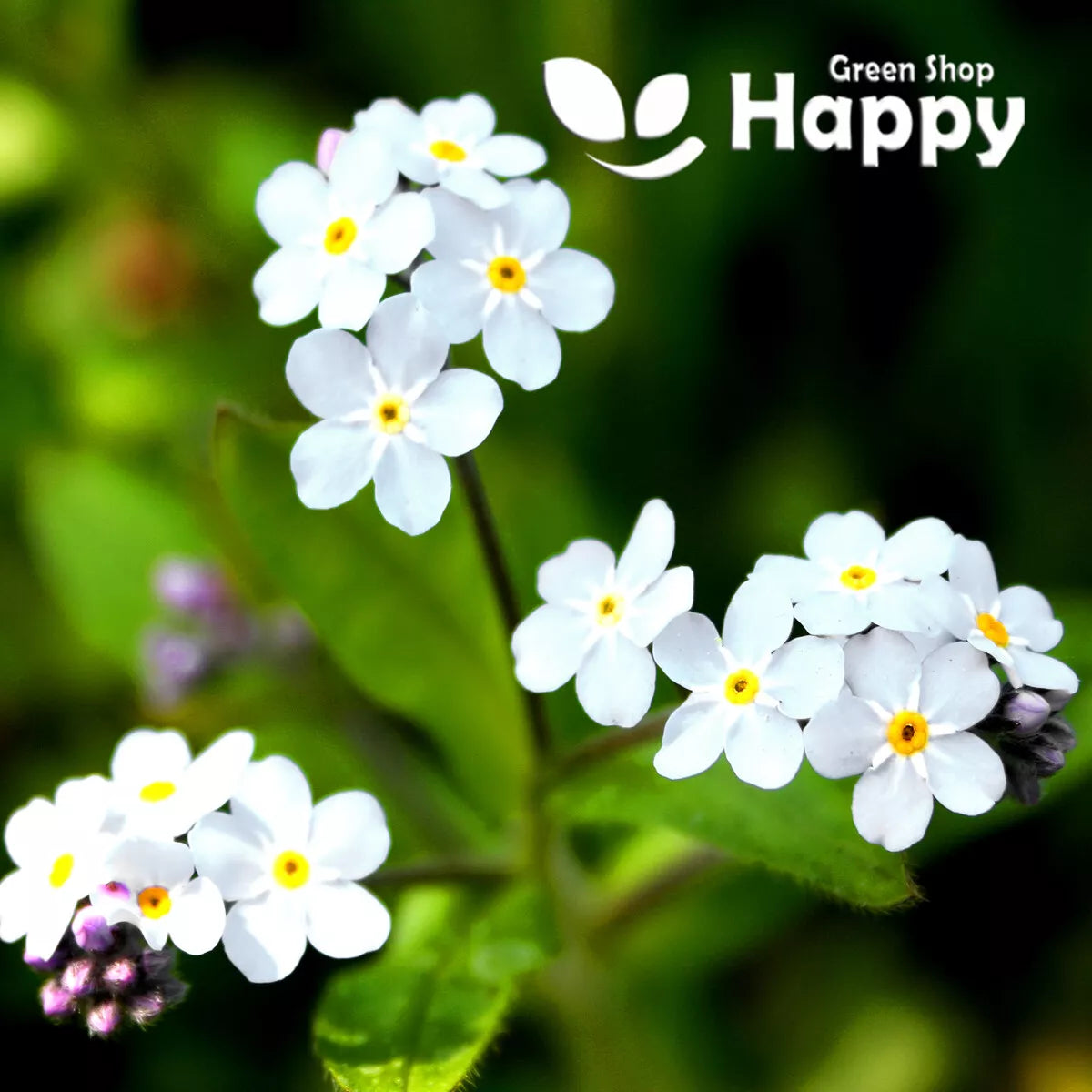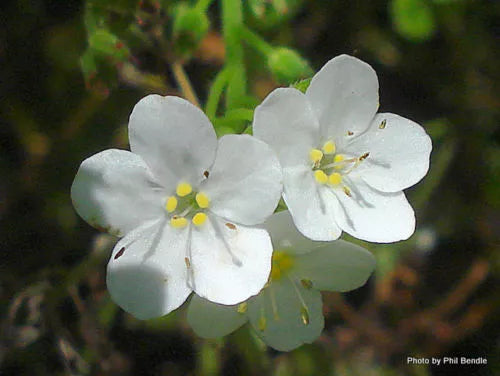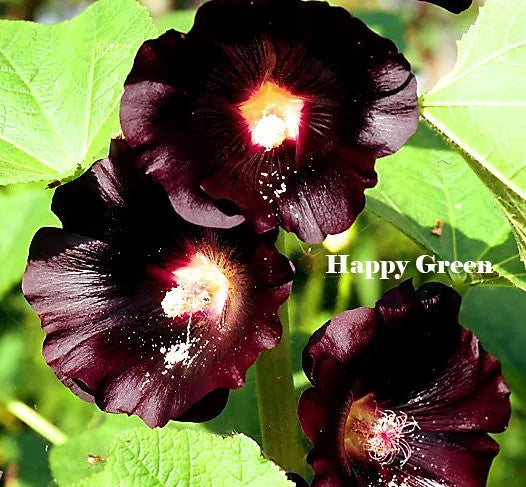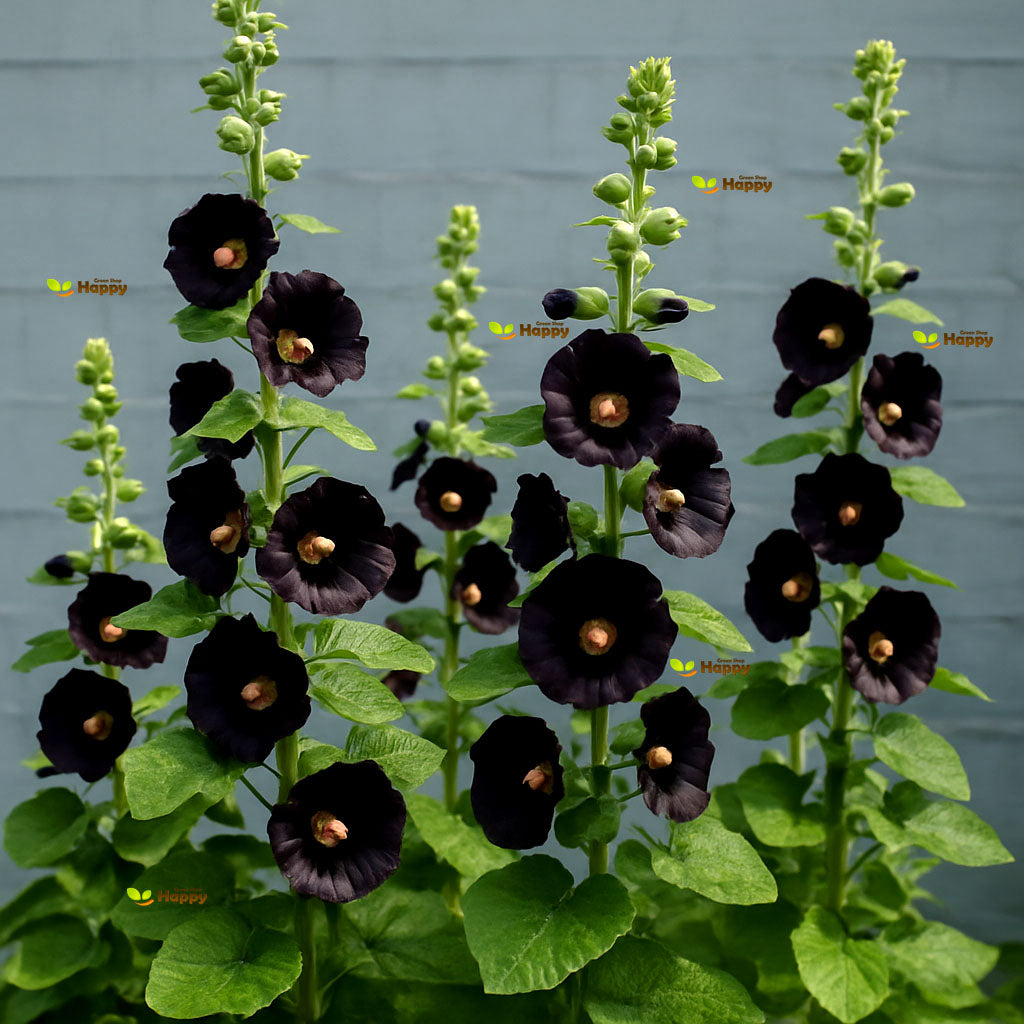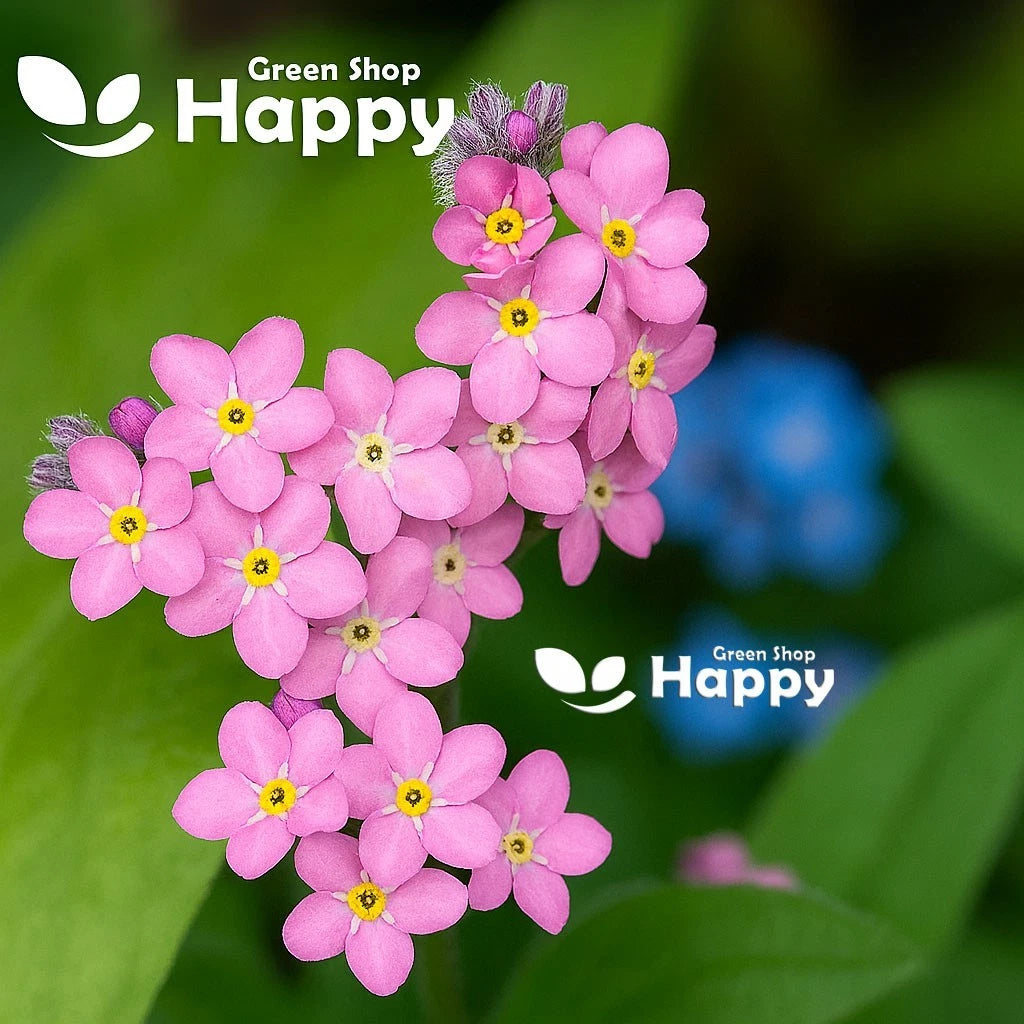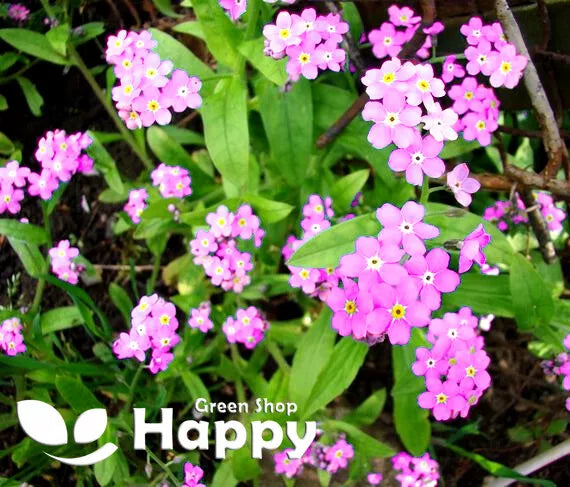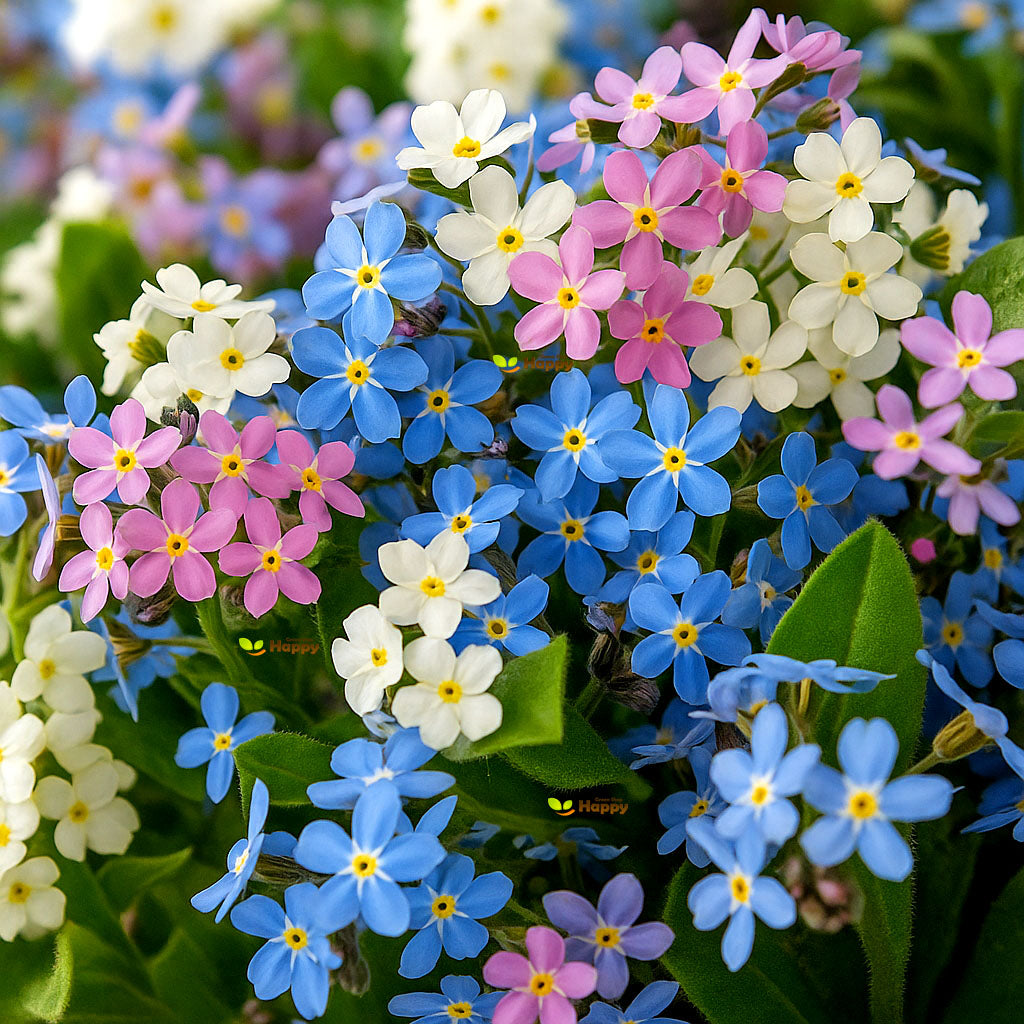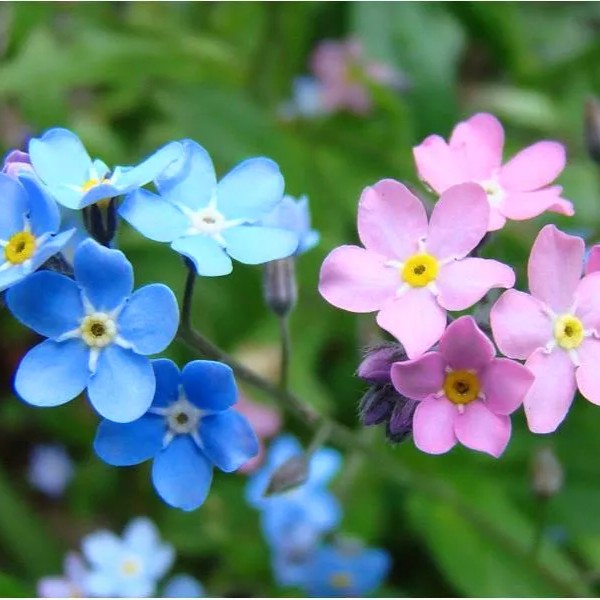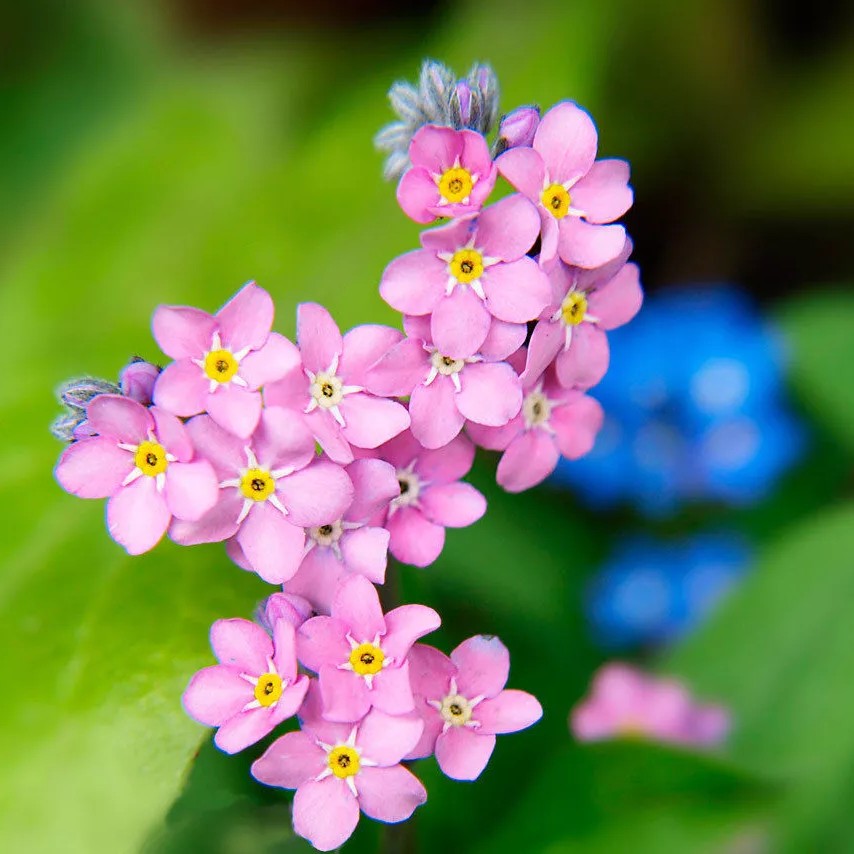Sort by:
56 products
56 products
Column Stock Mammouth Excelsior Mix – 100 Seeds (Matthiola incana)
Enjoy a vertical burst of color with Column Stock Mammouth Excelsior Mix, known for its tall, elegant spikes and fragrant blooms perfect for cutting or borders.
What Makes It Special
-
Tall, stately flower spikes with vibrant colors
-
Sweetly scented blooms ideal for bouquets
-
Long-lasting flowers that enhance garden aesthetics
Key Features
-
Height: 60–90 cm
-
Full sun, well-drained soil
-
Biennial/Annual, blooms in spring to summer
Ideal For
-
Garden borders and formal beds
-
Cut flower arrangements
-
Attracting pollinators like bees and butterflies
Sowing
-
Sow indoors 6–8 weeks before last frost
-
Transplant seedlings after frost risk passes
-
Germination: 10–15 days
-
Space plants 20–25 cm apart
Carnation Mix Chabaud – Elegant Fragrant Blooms
Carnation Mix Chabaud produces charming, fragrant flowers in a variety of colors. Perfect for borders, rock gardens, and cut flower arrangements.
What Makes It Special
-
Delightfully fragrant blooms
-
Variety of vibrant colors
-
Long-flowering and easy to grow
-
Ideal for fresh bouquets and garden charm
Key Features
-
Annual or biennial plant
-
Grows 30–50 cm tall
-
Blooms late spring to summer
-
Thrives in full sun and well-drained soil
-
Compact and bushy growth
Ideal For
-
Garden borders and flower beds
-
Rock gardens and patios
-
Cut flowers and bouquets
-
Pollinator-friendly gardens
Sowing
-
Sow indoors 6–8 weeks before last frost or directly outdoors after frost
-
Plant seeds 0.3–0.5 cm deep
-
Germination: 10–14 days at 18–22°C
-
Space 15–20 cm apart
-
Water moderately and provide full sun
Canterbury Bells Mix Seeds (Campanula medium)
Canterbury Bells are classic biennial flowers cherished for their bell-shaped blooms in a range of vibrant colors. This mix produces tall, elegant stems covered in large, showy flowers that brighten borders, cottage gardens, and cut flower arrangements. With their long-lasting blooms and architectural form, they are perfect for adding vertical interest and charm to any garden.
What Makes It Special
-
Produces bell-shaped flowers in multiple colors
-
Tall, upright growth adds vertical structure to borders
-
Excellent for cut flowers with a long vase life
-
Biennial: flowers in the second year for a reliable display
Key Features
-
Botanical name: Campanula medium
-
Common name: Canterbury Bells
-
Seed count: Approx. seeds per pack
-
Height/Spread: 60–90 cm tall, 25–30 cm spread
-
Position: Full sun to partial shade, well-drained soil
-
Flowering period: Second year; early to mid-summer
-
Lifespan: Biennial
Ideal For
-
Borders and cottage-style gardens
-
Cut flower arrangements
-
Mixed flower beds
-
Pollinator-friendly gardens
Sowing Instructions
-
When to sow:
-
Indoors: February–March for transplanting
-
Outdoors: April–May in well-prepared soil
-
-
How to sow:
-
Sow seeds thinly on surface and lightly press into soil
-
Keep soil moist until germination (10–20 days)
-
-
Transplant/Thin: Space seedlings 25–30 cm apart
-
Care: Protect young plants from frost; stake taller varieties if needed
Canterbury Bells Double Mix – Seeds
(Campanula medium)
Canterbury Bells ‘Double Mix’ is a traditional cottage garden favorite, producing tall spires filled with large, fully double bell-shaped blooms. This colorful mix features shades of blue, pink, white, and lavender, bringing old-fashioned charm and elegance to borders, beds, and cutting gardens.
Why Grow Canterbury Bells Double Mix?
-
Stunning double blooms in soft pastel shades
-
Classic cottage garden plant with tall spires
-
Long-lasting cut flowers for arrangements
-
Reliable biennial, flowering the following year
Key Features
-
Type: Biennial
-
Height: 60–90 cm
-
Flowers: Early to mid-summer (second year)
-
Position: Full sun to partial shade
-
Soil: Well-drained, fertile soil
Ideal For
-
Cottage and traditional gardens
-
Flower borders and background planting
-
Cut flower arrangements
-
Pollinator-friendly spaces
Sowing & Growing
-
Sow indoors: May–July in trays of fine compost (do not cover seeds – light aids germination)
-
Germination: 14–21 days at 18–22°C
-
Transplant: Prick out seedlings and grow on before planting out in autumn
-
Care: Water regularly, deadhead faded blooms, and stake taller plants if needed
Canterbury bells 'Cup and saucer' mix - 2000 seeds (Campanula medium Calycanthema)
£1.15
Unit price perCanterbury bells 'Cup and saucer' mix - 2000 seeds (Campanula medium Calycanthema)
£1.15
Unit price perCanterbury Bells ‘Cup and Saucer’ Mix – Seeds (Campanula medium calycanthema)
Description:
Bring timeless charm to your garden with Canterbury Bells ‘Cup and Saucer’ Mix, a classic Campanula medium calycanthema variety celebrated for its distinctive bell-shaped blooms surrounded by delicate “saucers.” This enchanting biennial mix produces tall, sturdy stems covered in pastel shades of blue, pink, white, and lavender. Perfect for cottage gardens, borders, and cutting gardens, these long-lasting flowers make stunning summer displays both in beds and bouquets.
Key Features
-
Unique “cup and saucer” double blooms
-
Elegant mix of blue, pink, white, and lavender shades
-
Tall, upright habit perfect for borders and cutting
-
Attracts bees and pollinators
-
Traditional cottage garden favorite
Ideal For
-
Cottage and country-style gardens
-
Flower borders and mixed beds
-
Cut flower arrangements
-
Pollinator-friendly planting
Sowing & Growing
-
Sow Indoors: February–April
-
Transplant Outdoors: May–June
-
Flowering: June–August (following year)
-
Height: 60–80 cm
-
Spacing: 30 cm apart
-
Light: Full sun or partial shade
-
Soil: Fertile, well-drained
Care Tips
-
Deadhead to encourage extended flowering
-
Water moderately; avoid waterlogging
-
Support tall stems if exposed to strong winds
-
Allow some plants to self-seed for future blooms
Alpine Forget-Me-Not White Seeds (Myosotis alpestris)
The Alpine Forget-Me-Not White is a rare and elegant form of the classic alpine flower, producing clusters of pure white star-like blooms with delicate yellow centers. Compact and easy to grow, this hardy perennial is perfect for adding a touch of brightness to shady corners, rockeries, and spring borders. Its soft charm makes it a beautiful companion to blue and pink varieties, creating a natural alpine display.
What Makes It Special
-
Unusual snow-white blooms, less common than the classic blue
-
Hardy and resilient, ideal for cool and mountainous conditions
-
A symbol of purity, remembrance, and enduring affection
-
Pairs beautifully with colored alpine flowers and spring bulbs
Key Features
-
Botanical name: Myosotis alpestris
-
Variety: Alpine White
-
Height/Spread: 15–25 cm tall, 15–20 cm spread
-
Position: Full sun to partial shade; prefers moist, well-drained soil
-
Flowering period: Spring to early summer
-
Lifespan: Hardy perennial (often grown as a biennial)
Ideal For
-
Rock gardens and alpine borders
-
Shady garden spots
-
Cottage and wildflower gardens
-
Mixed displays with blue and pink forget-me-nots
-
Spring bulb underplanting (tulips, daffodils, hyacinths)
Sowing Instructions
-
When to sow: Late spring to mid-summer (May–July) for blooms the following spring.
-
How to sow:
-
Sow thinly on trays or directly into finely raked soil outdoors.
-
Cover lightly with soil or compost.
-
Keep moist until germination (10–21 days).
-
-
Transplant/Thin: Space seedlings 15–20 cm apart when large enough to handle.
-
Care: Allow to self-seed naturally for repeat displays year after year.
Black Hollyhock – Seeds (Althaea rosea nigra)
Black Hollyhock (Althaea rosea nigra) is a striking biennial producing tall spikes of deep, dark purple to almost black double blooms. Its dramatic flowers create a bold focal point in borders, cottage gardens, and pollinator-friendly areas. Easy to grow and long-lasting, this variety attracts bees and butterflies while adding elegance and vertical interest to any garden.
Why Grow "Black Hollyhock"
-
Tall spikes of deep purple to nearly black flowers
-
Dramatic focal point for borders and cottage gardens
-
Attracts bees, butterflies, and other pollinators
-
Hardy biennial with long-lasting blooms
Key Features
-
Type: Biennial (Althaea rosea nigra)
-
Height: 1.8–2.0 m
-
Flowering: Second year after sowing
-
Position: Full sun
-
Uses: Borders, cottage gardens, pollinator planting, cut flowers
Ideal For
-
Creating vertical interest and dramatic color in borders
-
Cottage and mixed garden designs
-
Pollinator-friendly planting
-
Gardeners seeking bold, elegant biennial flowers
Sowing & Growing
-
Sow indoors: January–March
-
Sow outdoors: Directly in soil April–May
-
Germination: 14–21 days
-
Plant out after last frost, spacing 45–60 cm apart
-
Prefers full sun and well-drained soil
Alpine Forget-Me-Not Pink Seeds (Myosotis alpestris)
The Alpine Forget-Me-Not Pink is a delightful variation of the classic alpine flower, producing clusters of soft pink star-like blooms with cheerful yellow centers. Compact, hardy, and easy to grow, this alpine treasure brings a gentle pastel touch to borders, rock gardens, and naturalized plantings. Its romantic tones make it especially beautiful when planted alongside the traditional blue and rare white forms.
What Makes It Special
-
Uncommon pink form of the traditional alpine flower
-
Hardy and resilient, thrives in cool climates and rocky soil
-
A symbol of remembrance and affection, with a softer romantic hue
-
Perfect companion to blue and white alpine forget-me-nots
Key Features
-
Botanical name: Myosotis alpestris
-
Variety: Alpine Pink
-
Height/Spread: 15–25 cm tall, 15–20 cm spread
-
Position: Full sun to partial shade; prefers moist, well-drained soil
-
Flowering period: Spring to early summer
-
Lifespan: Hardy perennial (commonly grown as a biennial)
Ideal For
-
Rock gardens and alpine displays
-
Mixed pastel-themed borders
-
Cottage and wildflower gardens
-
Planting with spring bulbs (tulips, daffodils, hyacinths)
-
Combining with blue and white forget-me-nots for a tricolor effect
Sowing Instructions
-
When to sow: Late spring to mid-summer (May–July) for blooms the following spring.
-
How to sow:
-
Sow thinly on trays or directly outdoors into finely raked soil.
-
Cover lightly with soil or compost.
-
Keep moist until germination (10–21 days).
-
-
Transplant/Thin: Space seedlings 15–20 cm apart once large enough to handle.
-
Care: Allow plants to self-seed for naturalized displays year after year.
Alpine Forget-Me-Not Mix Seeds (Myosotis alpestris)
The Alpine Forget-Me-Not Mix is a charming, low-growing perennial that produces masses of tiny star-shaped flowers in soft shades of blue, pink, and white. Known for their delicate beauty and sentimental symbolism, forget-me-nots are perfect for naturalizing in borders, rock gardens, and wildflower meadows. These compact plants are especially suited for alpine and cottage garden settings, where they create a cheerful carpet of spring color.
What Makes It Special
-
Beloved for their dainty flowers and long-lasting symbolism of remembrance
-
Compact, low-growing plants ideal for rock gardens and alpine beds
-
Early-season blooms bring vibrant color to spring gardens
-
Excellent for naturalizing and combining with tulips or daffodils
Key Features
-
Botanical name: Myosotis alpestris
-
Variety: Alpine Mix
-
Height/Spread: 15–25 cm tall, 15–20 cm spread
-
Position: Full sun to partial shade; thrives in moist, well-drained soil
-
Flowering period: Spring to early summer
-
Lifespan: Hardy perennial (often grown as biennial in some climates)
Ideal For
-
Rock gardens and alpine beds
-
Cottage gardens and wildflower meadows
-
Spring bulb companions (daffodils, tulips)
-
Borders, edging, and naturalized plantings
Sowing Instructions
-
When to sow: Late spring to early summer (May–July) for flowers the following year.
-
How to sow:
-
Sow thinly in trays or directly in a prepared bed.
-
Cover lightly with fine soil or compost.
-
Keep soil moist until germination (1–3 weeks).
-
-
Transplant/Thin: Space plants 15–20 cm apart.
-
Care: Prefers cool, moist conditions. Allow some plants to self-seed for naturalized drifts.
Showing 54/56




